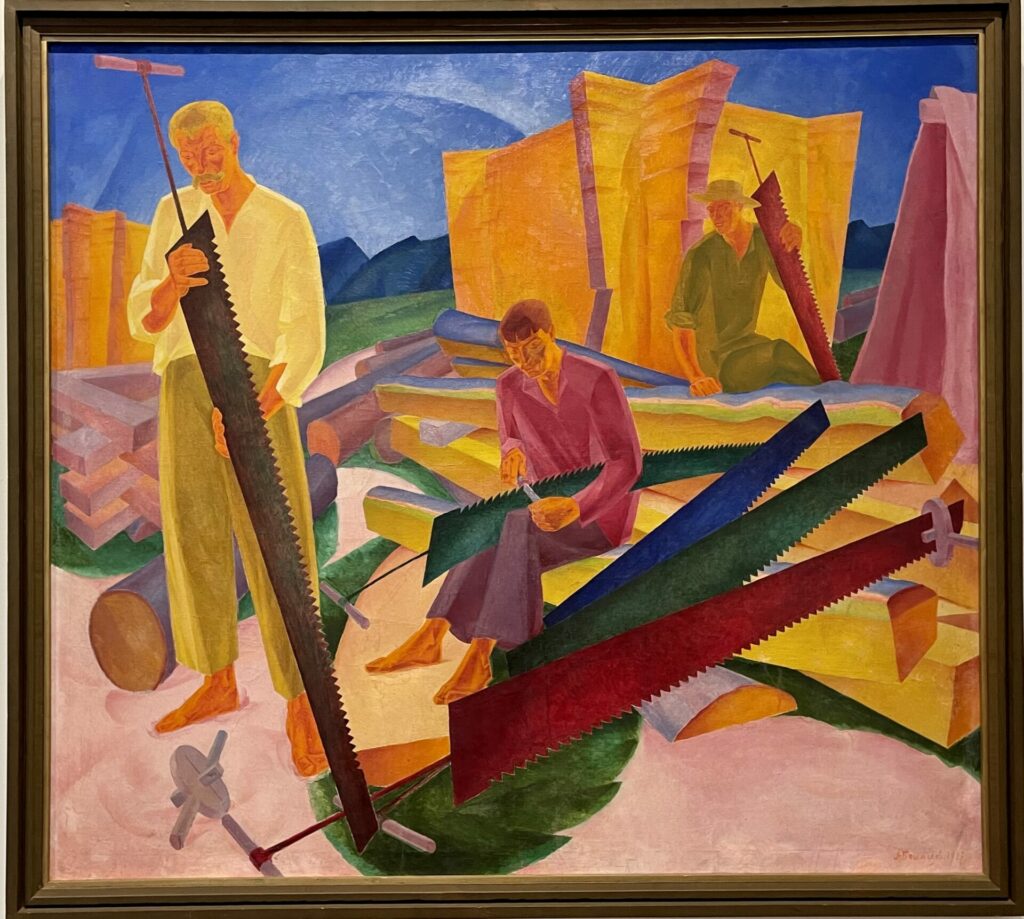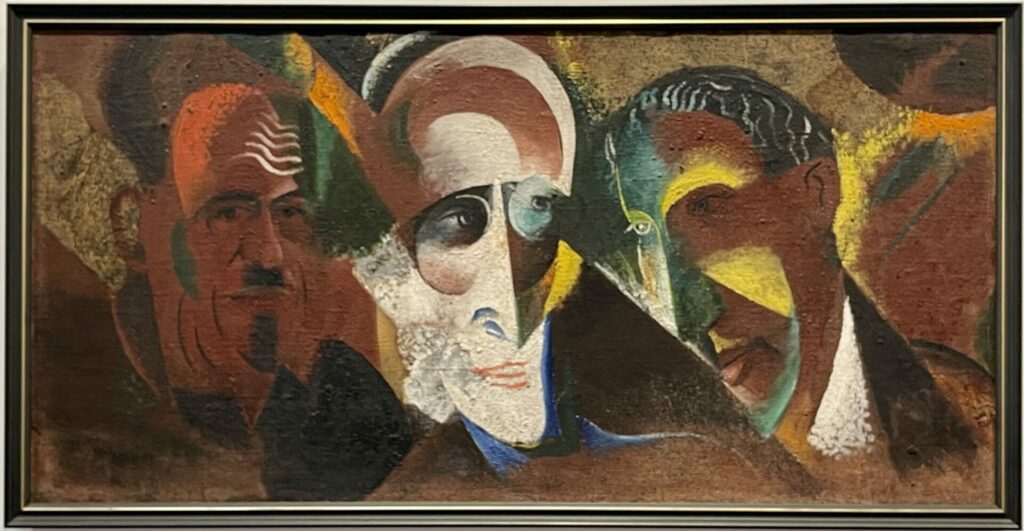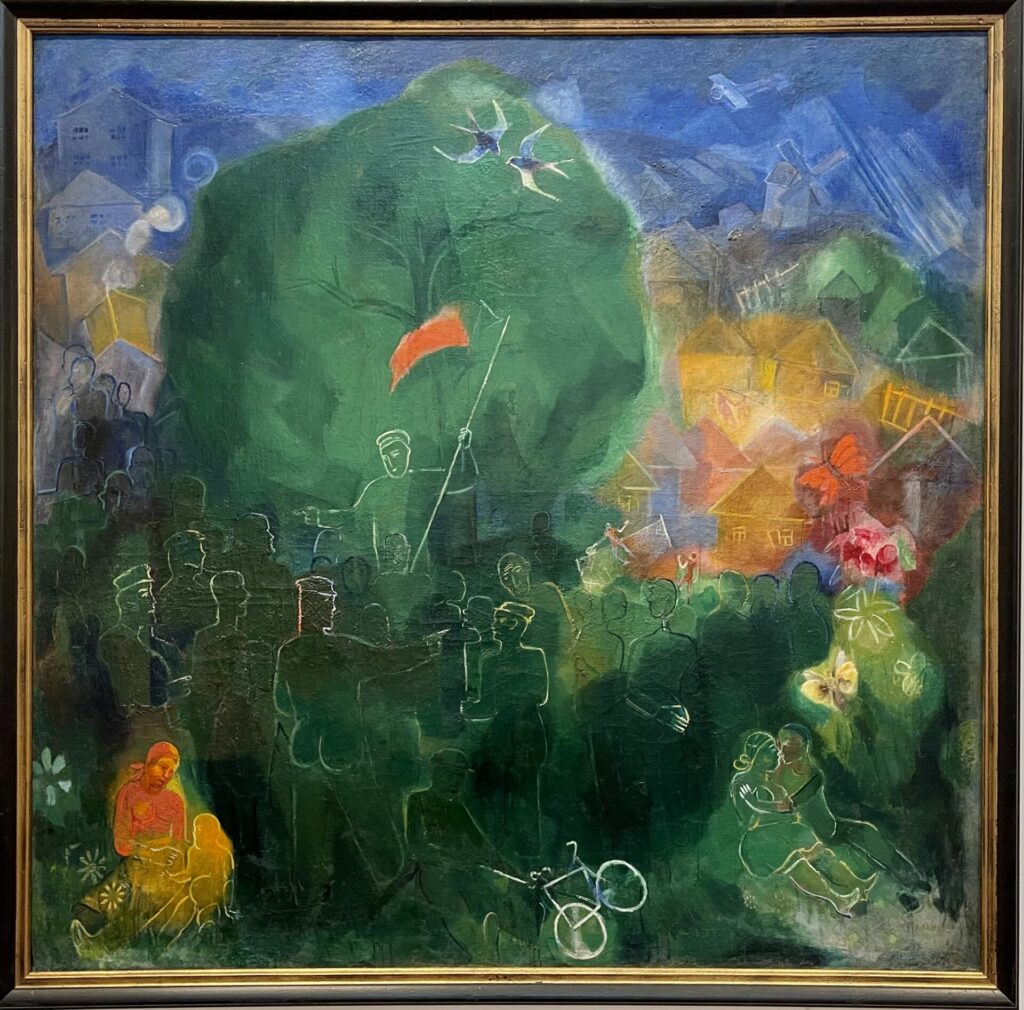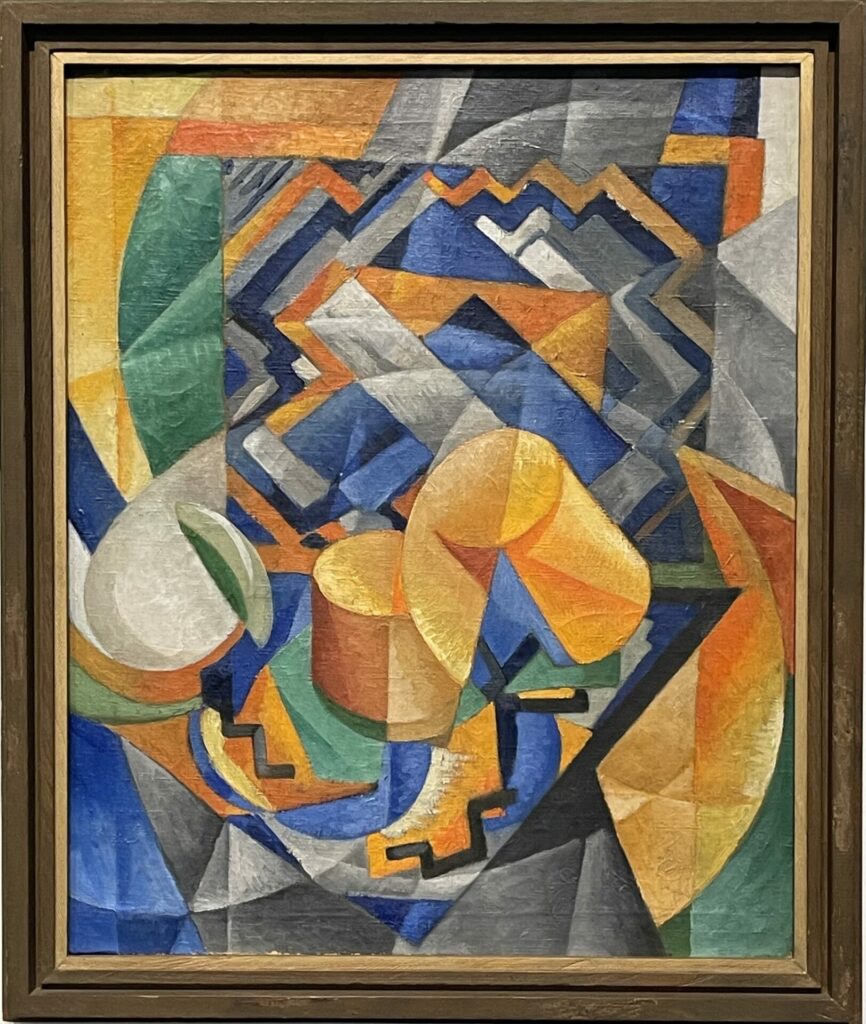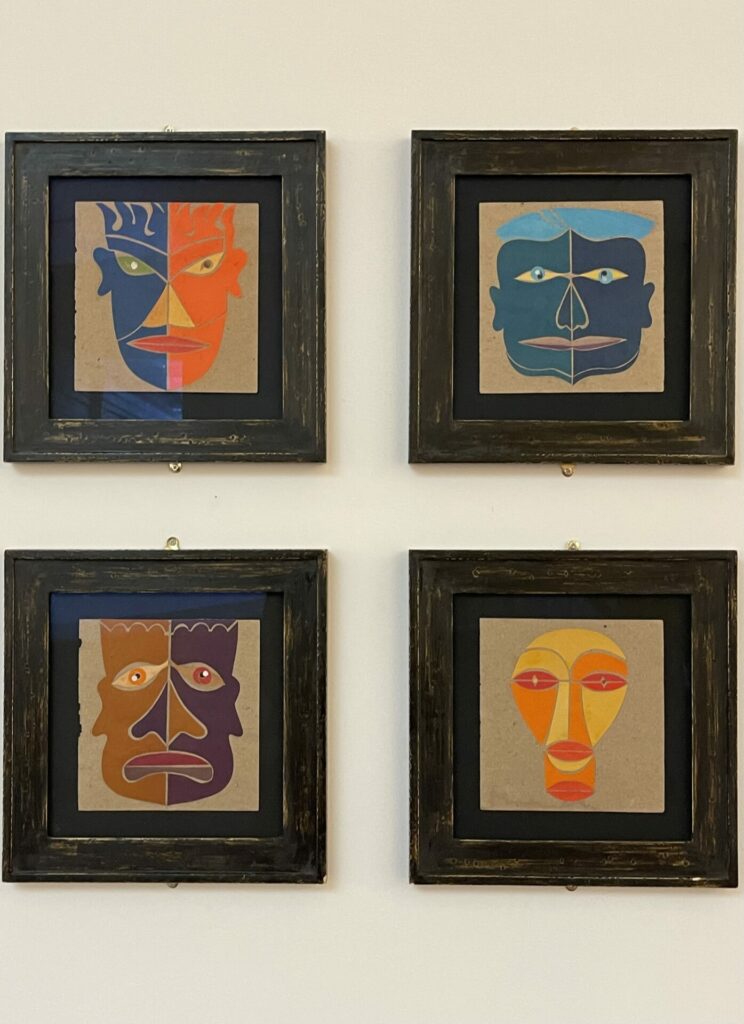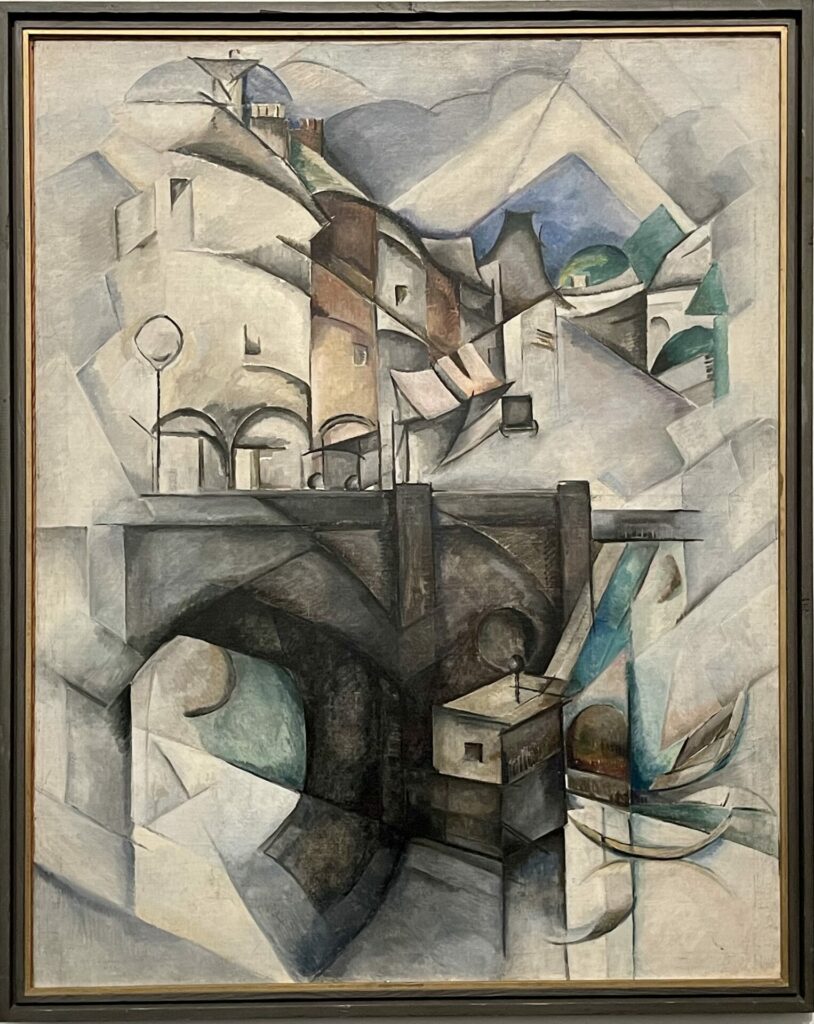Aptly named “In the Eye of the Storm,” the temporary exhibition of modern (1900-1930) Ukrainian artworks at the Royal Museums of Fine Arts of Belgium recently opened in Brussels.
Many of these coveted pieces were loaned by two Kyiv museums -- the National Art Museum of Ukraine and Museum of Theatre, Music and Cinema of Ukraine – after the outbreak of war to safeguard and share them internationally. The rest have been loaned by private collectors, so they have rarely been publicly seen if at all.
“Belgium can contribute to the common efforts of the international community to keep those works of art safe by welcoming them in our museums, but I’m even more proud that we can share the story of the Ukrainian people with the world,” says Thomas Dermine, Belgian Federal Secretary of State for Science Policy, who opened the exhibition on behalf of Belgium. “This exhibition illustrates the importance and the influence of Ukrainian artists in the history of art on our continent… transcending borders and showcasing the unique ability of art to bridge gaps, foster understanding and create a sense of belonging, even ‘in the eye of the storm.’
“I hope that this exhibition can help to create a home away from home for the Ukrainian community in exile in Belgium but also in neighbouring countries – a place where people who have fled their home can celebrate their culture, their heritage and their identity,” Dermine adds.
“In the Eye of the Storm” is the most comprehensive exhibition to date about modern art in Ukraine. It features more than 70 works, largely oil paintings but also sketches and collages, by internationally renowned artists like Alexandra Exter and El Lissitzky as well as other talented Ukrainians like Borys Kosarev, Viktor Palmov and Oleksandr Bohomazov. Most had roots in Kyiv and Kharkiv and all contributed to the country’s cultural heritage.
The modernist movement in Ukraine took place during World War I, the fall of the Russian Empire and Ukraine’s fight for independence, which culminated in the establishment of Soviet Ukraine. Artists found solace amidst turmoil by experimenting with bright colours, geometric shapes, abstract figures and even typography, creating their own Cubo-Futurist style.
Ukrainian modernism distinguished itself with political freedom from the simultaneous Russian artistic movement called Constructivism. (The latter was all about propaganda and reinterpretation of traditional art practices to create a new identity for the revolutionary state.) “It was a separate school of modernism with Ukraine being at the crossroads of the East and West; Ukrainians were much more individualistic,” notes Konstatin Akinsha, co-curator of “In the Eye of the Storm” along with Francisca Vandepitte of the Royal Museums in Brussels and Katia Denysova of the Courtauld Institute of Art in London.
Getting the masterpieces out of “the eye of the storm” in Kyiv for this exhibition was an art unto itself. “Probably two weeks before the beginning of the war in Ukraine … I became very alarmed and I wrote an article in The Wall Street Journal saying we have to start moving art out of the country right now,” recalls Akinsha. Some 50 artworks sat for a while in a cellar due to bombardments and the prohibition of cars at night but eventually, they were secretly loaded onto trucks and transported over five days to Madrid with the help of military convoys – just in the nick of time before the capital was bombarded. “My best PR agent became Mr. Putin,” Akinsha says. “Of course, I would prefer to do without him.”
“It’s remarkable they put this exhibition together,” notes James Butterwick, an art dealer and collector in London who loaned two of his own pieces for it. “In a tiny, tiny space of time, they managed to ship this stuff.”
Seventeen of the artworks “In the Eye of the Storm” are from private collections, largely sourced by Butterwick. “It’s been years since they’ve seen the light of day,” he says, underscoring the rare opportunity to see them.
The exhibition debuted in Madrid at the Museo Nacional Thyssen-Bornemisza from 29 November 2022 to 2 May 2023. Apollo magazine, one of the leading art publications, recently named it 2023’s “Exhibition of the Year.”
“In the Eye of the Storm” runs in Brussels until 28 January 2024, then moves to Vienna’s Belvedere Museum (23 Feb.-2 June 2024) and London’s Royal Academy of Arts (29 June-13 Oct. 2024). The exhibition was organised by these three museums in partnership with the National Art Museum of Ukraine.


